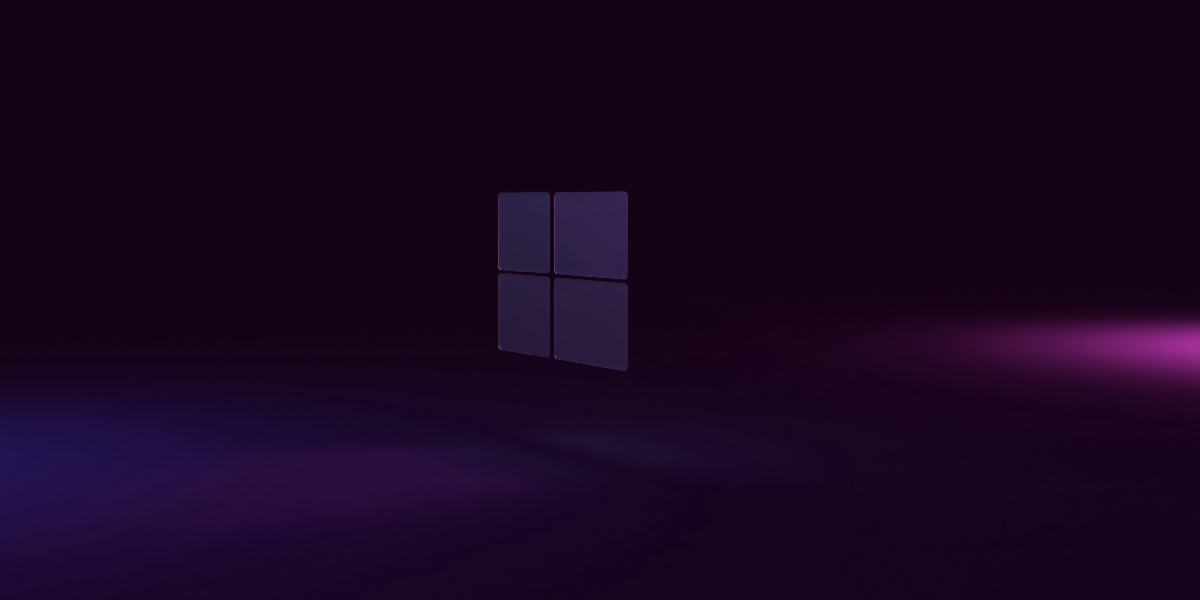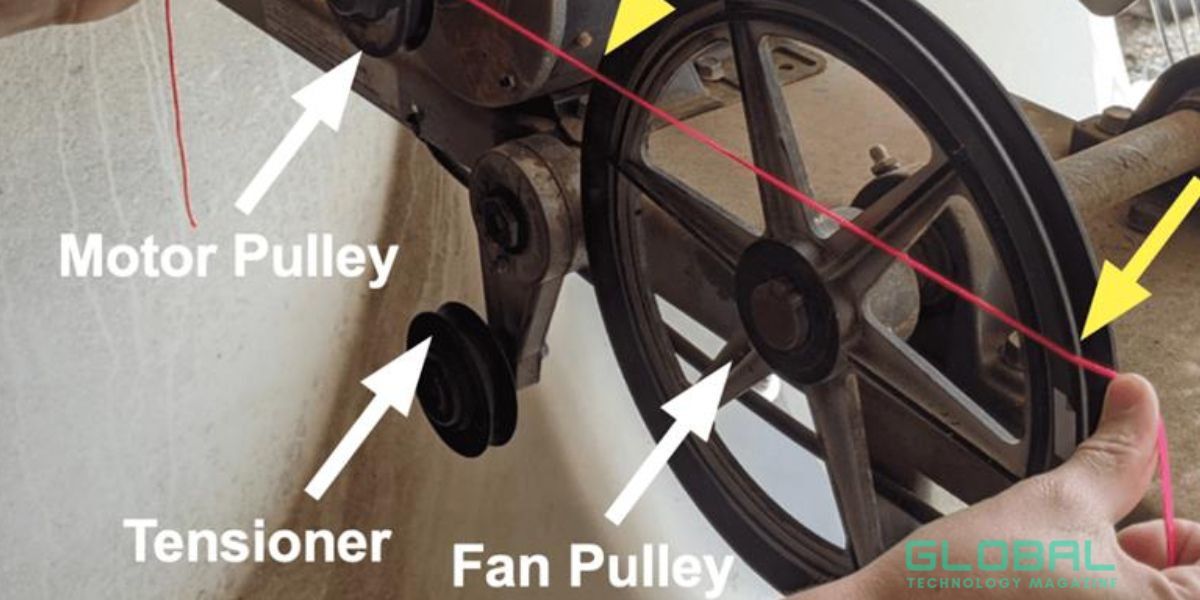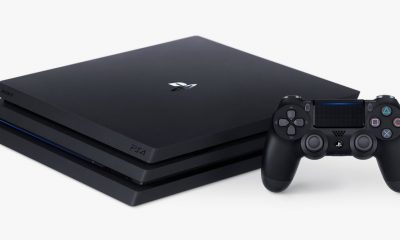Tech
The Importance of User-Centered Design in Control Panel Design
Published
1 year agoon
By
admin
Have you ever used a gadget and found it frustratingly hard to control? That’s often a sign of poor control panel design. Good design makes devices easier and more enjoyable to use.
It’s all about making things work well for the people using them, not just looking cool. In this article, we’ll explore why focusing on the user is key in control panel design. It can make the difference between a product we love to use and one we wish we’d never bought.
Join us as we dive into the importance of user-centered design.
Enhanced User Experience
A big part of creating control screens is making the user experience better. It means knowing what the end users want and need and giving it to them. This method makes sure that the end product works well and is easy to use.
By putting user experience first when designing control panels, companies can make new products much easier to learn how to use. This makes users happier because they can use the product effectively without having to deal with extraneous problems.
Reduced Errors and Accidents
When building control panels, the most important thing is to make mistakes and crashes as unlikely as possible. As the name suggests, this part of the design is all about making systems that keep people from making mistakes that could cause problems or even crashes. Putting in place safety features, sensible control layouts, and clear signs are all important ways to reach this goal.
Safety features, like emergency stop buttons and warning lights, are very important when designing a control panel. These features make sure that users can act quickly in unexpected scenarios, which lowers the chance of damage or crashes.
Increased Productivity and Efficiency
Increasing productivity and efficiency is a significant advantage of well-designed control panels. This is achieved by streamlining the interface, making it easy for users to access and use the controls they need without unnecessary delay. Simplifying operations allows users to complete tasks more quickly and with less effort.
If you find that your current control panel is hindering productivity rather than enhancing it, consider control panel engineering services to optimize your system for better performance.
Improved Learnability
Improving learnability is an important part of making control screens that are easy for people to use. It makes sure that new users can quickly figure out how to use the device without having to read a lot of instructions or watch a lot of videos. It takes less time and effort for users to understand and use tools that are well-designed, which improves the entire user experience.
Organizing controls in a way that makes sense and is constant, along with giving clear and concise directions, is part of designing for better learnability. This method helps people guess and remember how to use the industrial control panel, which makes the gadget easier for more people to use.
Empower Your Operations With Intuitive Control Panel Design
In the end, control panel design is more than just arranging buttons and displays. It’s about understanding and meeting the needs of those who use it every day. By focusing on making devices easy and safe to use, we can make our work and personal lives a bit smoother.
Remember, good designs fit into our lives effortlessly. Thinking about how real people will use a product leads to great electrical control panel design that stands the test of time.
Did you find the information in this article helpful? If so, be sure to check out our blog for more valuable resources.
You may like

Microsoft’s Windows is the cornerstone of personal computing – a platform billions rely on daily. In October 2021, Windows 11 debuted as the boldest Windows upgrade in years, boasting a modern interface, tighter hardware requirements, and features that reimagine productivity, gaming, and security.
This comprehensive guide—reflecting insights in “https://seguridadinformaticahoy.com/todo-sobre-windows-11”—dives into every facet of Windows 11: from its core design and feature set to performance improvements, tips, and potential caveats. Whether you’re a home user, gamer, or enterprise IT pro, you’ll gain a deep understanding of what Windows 11 truly delivers.
What’s New in Windows 11
Windows 11 is more than a minor facelift—it’s built on fresh aesthetics, AI elements, and next-gen hardware integration. Here’s what stands out:
-
Centered Start Menu & Taskbar: A macOS-inspired design with revamped icons and a centered layout that balances minimalism and efficiency.
-
Widgets: Reimagined widgets panel offering news, calendar, weather, and productivity insights at a glance.
-
Snap Layouts & Groups: Effortless window arrangement and group recall—great for multitasking and workflows.
-
Microsoft Teams Integration: A built-in Teams Chat accessible via the Taskbar.
-
Android App Support: Users can install Android apps via the Amazon Appstore (currently via beta).
-
Gaming Features: Auto HDR, DirectStorage, and optimized graphics performance.
-
Improved Windowing: Focused on sleek transitions, rounded corners, and taskbar enhancements.
All these updates are fully explained in “https://seguridadinformaticahoy.com/todo-sobre-windows-11,” which highlights Microsoft’s goal: reinvent usability while aligning with modern hardware trends.
System Requirements & Installation Guide
Minimum Requirements
To run Windows 11, your system must meet:
-
CPU: 1 GHz or faster, 2+ cores, 64-bit, on approved list
-
RAM: 4 GB
-
Storage: 64 GB
-
Firmware: UEFI, Secure Boot capability
-
TPM: Trusted Platform Module (TPM 2.0)
-
Display: 9” or larger, HD (720p), 8 bits/channel
-
Graphics: DirectX 12 / WDDM 2.x compatible
-
Internet: Microsoft Account + internet required for Home editions
TPM 2.0 proves essential and has sparked controversy with legacy machines being left out. But it’s a cornerstone for upgraded security.
How to Check Compatibility
-
PC Health Check App: Official tool from Microsoft.
-
Third-Party Tools: Utilities like WhyNotWin11 offer breakdowns.
-
BIOS Settings: Enable TPM, Secure Boot, virtualization.
Upgrade vs. Clean Install
-
In-Place Upgrade: Keeps your files/settings; easiest route for current Windows 10 users.
-
Clean Install: Fresh start; ideal for reclaimed SSDs or wiping malware. Use the official Media Creation Tool or ISO.
Step-by-Step Clean Install
-
Backup files with OneDrive, external drive, or clone tools.
-
Download Media Creation Tool from Microsoft.
-
Create Bootable USB (8 GB min).
-
Enable Secure Boot & TPM 2.0 in UEFI.
-
Boot from USB and install.
-
Sign in with Microsoft Account.
-
Personalize & activate updates/apps.
Don’t skip updates—they often fix teething issues for new adopters.
Redesigned Interface and User Experience
Aesthetic Refresh
Windows 11 introduces:
-
Centered Start & Taskbar with floating windows and rounded corners.
-
New system icons for modern consistency.
-
Transparent Acrylic taskbar, enhancing design depth.
-
Light/Dark Themes: Sync across elements and support dynamic desktop changes.
Start Menu & Search
-
Simplified layout: Pinned apps show front-and-center; recent files dynamically appear.
-
Universal Search integrates local files, apps, and web results.
Snap Layouts, Groups & Desktops
Hover over maximize to access Snap Layouts:
-
Choose layout templates or create your own multi-window setups.
-
Snap Groups let you toggle full multi-app workflows.
-
Virtual Desktops are now customizable with distinct wallpapers.
Widgets Panel
-
Find widgets with Taskbar toggle; personalize news, tasks, weather, and stock info.
-
Built-in Widgets API allows third-party extension over time.
Taskbar & Quick Settings
-
Unified pull-downs for Wi-Fi, volume, battery, and alerts.
-
Notifications appear grouped with an option to clear all in one go.
Productivity Features & Workflows
Microsoft Teams Chat
Integrated in Taskbar:
-
One-click start for personal chat, calls, or screen sharing.
-
Individual chat flow, not the full Teams interface—useful for quick communication.
Focus Sessions & Clock/Pomodoro
-
Set timers, link Spotify, and enable Do Not Disturb.
-
Motivation built in—great for structured work bursts.
Content-Aware Snipping & Screen Recording
-
Snipping Tool and Snag It alternatives are now native.
-
Clips from the xbox Game Bar support both gaming and productivity scenarios.
Voice Typing & Windows Dictation
-
Powered by cloud AI: improved accuracy and punctuation.
-
Rich voice commands for tasks like “delete that sentence.”
Context Menus & File Explorer
-
Simplified right-click options; advanced options hidden under “Show more.”
-
New command bar for File Explorer provides clarity and easier navigation.
Gaming on Windows 11
Microsoft’s PC gaming leap with Windows 11 is substantial:
Auto HDR
Adds high-dynamic-range color to DirectX 11+ games automatically, even non-HDR titles.
DirectStorage
Drastically increases data throughput, leading to faster load times on NVMe drives.
Xbox App & Game Pass
Now native to Taskbar, connecting you to online gaming, social, and streaming.
Unified Game Bar
Overlay for real-time FPS, recording, chat, and performance overlays.
Gamers benefit from more responsive gameplay and immersive visuals.
Security Enhancements
Security underpins Windows 11’s design:
TPM 2.0 & Secure Boot
Foundation for hardware-based encryption, key protection, and system integrity.
Windows Hello & Modern Authentication
Password-free login: facial recognition, fingerprint, and PIN sign-in.
Enhanced Hardware-Assisted Security
VBS (Virtualization-Based Security) and HVCI (Hypervisor-Enforced Code Integrity) are now enabled by default on capable hardware.
Smart App Control
AI-driven tool allowed only signed and trusted apps—blocks malware, office threats. Initially in preview, expanding via updates.
Microsoft Defender Updates
Security core UI redesigned, faster scans, enhanced phishing and ransomware guardrails.
App Ecosystem & Microsoft Store
Store Revamp
Revitalized UI boosts discoverability, faster load, and rich previews.
Broadened App Support
Win32, UWP, PWAs, and unpackaged store apps all available—more inclusive than before.
Android App Preview
Currently in beta via Amazon Appstore and Windows Subsystem for Android:
-
Install popular apps like TikTok, Kindle, and Zoom.
-
Performance still maturing, but early feedback is promising.
Progressive Web Apps (PWAs)
Installable via Edge with offline capabilities—great for frequent web tools.
Tips, Tricks, and Customization
Maximize your Windows 11 experience:
1. Rename Snap Layouts
-
Use
Win + Z, drag windows. -
Customize by dragging and positioning.
2. Create Virtual Desktop Workflows
-
Rename desktops (Work, School, Play).
-
Assign apps to desktops via right-click in Task Manager.
3. Use Focus Sessions
-
Access via Clock app—great for concentration.
-
Adds structure and syncing with Outlook.
4. Enable Smart App Control
-
Found in Settings → Privacy & Security.
5. Turbocharge Performance
-
Use Game Mode, Graphics Performance Preferences, and power plans.
-
Use Task Manager’s “Startup” tab to trim bloatware.
6. Customize the Taskbar
-
Drag items, sliver icons off, and anchor Widgets or Chat.
7. Use New File Explorer Shortcuts
-
Win + Efor Explorer, context switch via shortcut or command bar.
8. Animate with Voice Access
-
Controls like “Open Edge, Scroll down 3 pages, Click link” are fully supported.
9. Harness Whatsapp Web via PWA
-
Install from Edge—gives near-native desktop usability.
10. Tweak Touch & Pen Settings
-
Pen gestures, handwriting recognition, gestures via Settings → Bluetooth & devices.
Common Issues and Troubleshooting
Boot or Blue Screen on Unsupported Hardware
-
TPM 2.0 or Secure Boot issues: check BIOS, or choose Clean Install via ISO.
-
For older CPUs: bypass flag in registry during install—but not recommended for mainstream use.
Battery Drain & Performance Issues
-
AV scans, telemetry, and indexing increase workload.
-
Switch to Balanced or Power saver, disable telemetry via Group Policy.
Broken Audio or Display Drivers
-
Use Intel’s DCH drivers, latest AMD/NVIDIA Game Ready or Studio drivers.
Android App Not Working?
-
Ensure Windows Subsystem for Android is installed and in preview, and enable virtualization.
Taskbar or Widgets Broken
-
Run
sfc /scannow, reinstall stock apps via PowerShell (“Get-AppxPackage…”).
Snap Layout Stuck?
-
Re-enable Snap Assist in Settings → System → Multitasking.
FAQs
Is Windows 11 a free upgrade?
Yes—if you’re on licensed Windows 10 with hardware support, Microsoft offers a free upgrade via Windows Update.
Can I revert to Windows 10?
Yes, within 10 days of upgrade. Settings → System → Recovery → Roll back.
Why do I need TPM 2.0?
It secures keys and system integrity; foundational for modern ransomware resistance.
Are all Windows 10 apps compatible?
Over 99% install and run fine. Only a few low-level tool conflicts—mostly edge cases.
Do I need a Microsoft account?
Home edition requires it. Enterprise/LTSC allows local accounts.
Personalization tied to account access.
Conclusion
Windows 11 stands out not just in design, but in performance, security, and flexibility. Whether for daily tasks, creative workflows, or immersive gaming, its refreshed UI, productivity enhancements, and robust security make it compelling.
From rounded corners and centered Taskbar to Auto HDR and Smart App Control, it brings modern polish across the board. TPM 2.0 and VBS keep your system protected against modern threats. Android app support and progressive web apps broaden your software horizons.
Tech
Top 3 Advanced Persistent Threats and How Businesses Can Stop their Attacks
Published
3 months agoon
April 24, 2025By
admin
Businesses of various sizes and fields are susceptible to advanced persistent threats (APTs). According to the cybersecurity company ANY.RUN, in the first quarter of 2025 the most active phishing groups were Storm1747, TA569, and Storm1575. isn’t limited to, finance, media, and cybersecurity.
To protect the infrastructure of your organization, learn about their tactics and weak spots below.
Storm1747 – detected 16,140 times in January–March 2025
Storm1747 is a cybercriminal group responsible for the Tycoon 2FA phishing kit. It’s known to evade detection systems by using malicious QR codes. Still, such attacks don’t go unnoticed. The adversaries leave traces, and they can be identified.
To retrieve information on them and protect your company, use threat intelligence services. Here’s how to investigate threats in ANY.RUN’s TI Lookup, a constantly updated searchable database of IOCs, IOAs, and IOBs of the most recent attacks:
1.Enter the query
TI Lookup allows you to conduct compound searches. For example, let’s browse its database to look for threats flagged as Storm1747 and involving QR codes by entering this query:
threatName:”storm1747″ AND threatName:”qrcode”

In TI Lookup, you can form compound searches with any of over 40 available parameters
Explore current cyber threats with 50 trial requests in TI Lookup
2.See the results
Now we can see a list of all freshly gathered threat samples that fit our requirements:

The list of threat samples that fit our query
3.Collect actionable intel to enrich your defense
Each contains an in-depth threat context. By clicking any of the search results, you can continue the analysis in ANY.RUN’s Interactive Sandbox for malware analysis to collect detailed info on each threat and interact with malicious files safely to understand their behavior:

Interact with malware for further analysis in ANY.RUN’s Sandbox
That’s how you can analyze recent attacks, collect their indicators, and take measures to protect your company from upcoming threats associated with them.
TA569 – detected 1,005 times in January–March 2025
TA569 is a threat actor responsible for the SocGholish malware injected into compromised websites via malicious JavaScript.
With this simple search query in TI Lookup, we can find our which domains fell victim to SocGholish:
threatName:”socgholish” AND domainName:””

Search results for domains associated with the SocGholish
You can also subscribe to this or any other query via the Search Updates feature to keep track of the threats as they evolve. In this case, information on fresh attacks will appear on your dashboard highlighted in green.

Search Updates in TI Lookup allow you to track evolving threats
Storm1575 – detected 762 times in January–March 2025
TI Lookup allows you to check if an indicator has anything to do with a threat. For instance, you would like to find out whether a website is related to malicious activities. All you have to do is to browse the database for its mentions using a query like that:
domainName:”castirontexas[.]com”
And in a moment’s time, you’ll know that this website is associated with Storm1575, one of the leading recent cyber criminal groups. It’s known to conduct attacks targeting companies globally via the Dadsec platform.

The website we checked is associated with malicious activities
Try TI Lookup to Enrich Alerts and Speed up Incident Response
TI Lookup’s searchable database provides you with the most up-to-date information on the latest cyber threats and enables business and organizations to:
- Detect and identify attacks before they cause damage
- Investigate and browse IOCs, IOAs, and IOBs for more insights on threat actors
- Enhance the efficiency of your security team’s workflow
- Gain access to data that helps take proactive action against cyber threats
Over 500,000 security professionals worldwide, including SOC teams from 15,000 companies, contribute to ANY.RUN’s database, keeping it relevant and abundant.
Tech
How Accurate Pulley Alignment Can Prevent Equipment Failures
Published
3 months agoon
April 22, 2025By
admin
In industrial settings, the smooth operation of machinery is essential for productivity and safety. One often overlooked aspect that can significantly impact machinery performance is pulley alignment. Proper alignment of pulleys ensures that belts run smoothly, reducing wear and tear on equipment components and minimizing the risk of costly breakdowns. In this article, we’ll explore the importance of accurate pulley alignment and how it can prevent equipment failures.
Understanding Pulley Alignment
Pulleys are critical components in various types of machinery, including conveyor systems, pumps, and motors. They transmit power from one rotating shaft to another via belts or chains. When pulleys are misaligned, even slightly, it can lead to a range of problems, including increased friction, excessive vibration, and premature wear on belts and bearings.
Common Causes of Misalignment
Several factors can contribute to pulley misalignment, including:
- Installation Errors: Improper installation of pulleys or shafts can result in misalignment from the start.
- Belt Tension: Inadequate or uneven belt tension can cause pulleys to shift out of alignment over time.
- Shaft Deflection: Shaft deflection due to excessive loads or improper support can lead to misalignment issues.
- Thermal Expansion: Temperature fluctuations within the machinery can cause components to expand or contract, affecting pulley alignment.
Impact of Misalignment on Equipment
Misaligned pulleys can have significant consequences for machinery and production processes, including:
- Increased Wear and Tear: Misalignment causes excessive friction, leading to accelerated wear on belts, bearings, and other components.
- Reduced Efficiency: Machinery operates less efficiently when pulleys are misaligned, resulting in higher energy consumption and reduced productivity.
- Vibration and Noise: Misalignment often results in excessive vibration and noise, which can be disruptive and potentially harmful to equipment and personnel.
Preventive Measures
Preventing pulley misalignment is key to maintaining equipment reliability and prolonging service life. Here are some preventive measures to consider:
- Regular Inspection: Conduct routine inspections of pulley alignment using precision tools such as a laser alignment tool. Identify and correct misalignment issues promptly.
- Proper Installation: Ensure that pulleys and shafts are installed correctly according to manufacturer guidelines to minimize the risk of misalignment from the outset.
- Belt Tensioning: Maintain proper belt tension to prevent slippage and minimize the likelihood of pulley misalignment.
- Temperature Monitoring: Monitor temperature fluctuations within the machinery and take measures to minimize thermal expansion effects on pulley alignment.
Importance of Laser Alignment Tools
Laser alignment tools are invaluable for achieving precise pulley alignment. These advanced devices use laser technology to measure and adjust the position of pulleys with unparalleled accuracy. By providing real-time feedback and visual guidance, laser alignment tools enable operators to achieve optimal alignment quickly and efficiently.
Conclusion
In conclusion, accurate pulley alignment is crucial for preventing equipment failures and ensuring the smooth operation of industrial machinery. By addressing misalignment issues proactively and utilizing advanced tools such as laser alignment tools, manufacturers can minimize downtime, reduce maintenance costs, and enhance overall productivity. Investing in proper pulley alignment practices is a wise decision that pays dividends in the form of improved equipment reliability and performance.
Remember, maintaining optimal pulley alignment is not just a matter of efficiency—it’s a fundamental aspect of ensuring the safety and longevity of industrial equipment.

The Ultimate Guide to the Best Android Strategy Games in 2025: What to Play and Why

What Are the Most Effective Digital Marketing Strategies?

Everything You Need to Know About Windows 11

The Best E commerce Platforms for Small Businesses in 2025

How to Start Coding from Zero Level with No Prior Experience

Why Great Output Doesn’t Always Mean Great Performance

Top 3 Advanced Persistent Threats and How Businesses Can Stop their Attacks

14 Actionable Tips to Improve Your Manufacturing Business

10 Tips for Optimizing Images for SEO

10 Most Profitable Businesses in India
Trending
-

 Miscellaneous3 years ago
Miscellaneous3 years agoSubnautica Below Zero Map – Know About Complete World Map and Coordinates 2021
-

 Mobile2 years ago
Mobile2 years agoVivo Company Belongs to Which Country? Vivo Made in Which Country? Is Vivo Chinese Company?
-

 Gaming2 years ago
Gaming2 years agoWhen Did the PS4 Come Out
-

 Gaming3 years ago
Gaming3 years agoWhy F95 Zone is the Leading Gaming Community?

